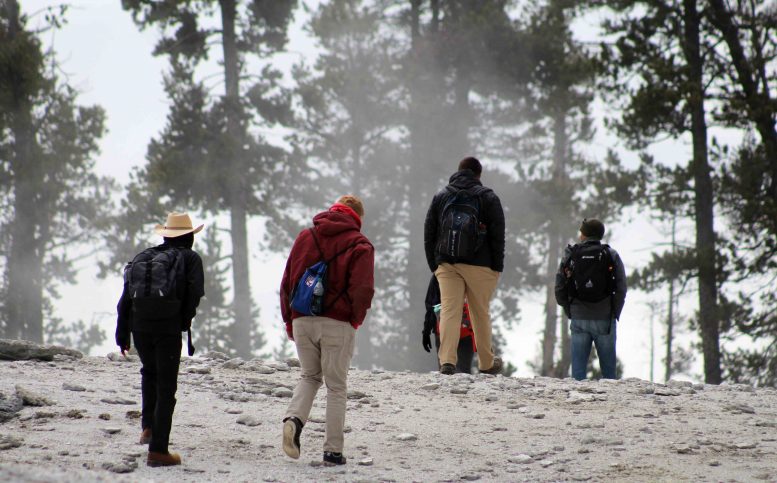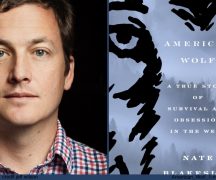STORY EMILY WITTIG
For BG Independent News
If you’re lucky enough to spot one bear while visiting Yellowstone National Park, then you’d call it a successful trip. Finding a mama black bear and three cubs within the first 60 minutes of being in the park? Blasphemy. This is exactly how 24 wide-eyed students and five excited instructors who had just flown into Bozeman, Montana earlier that day, began their field experience.
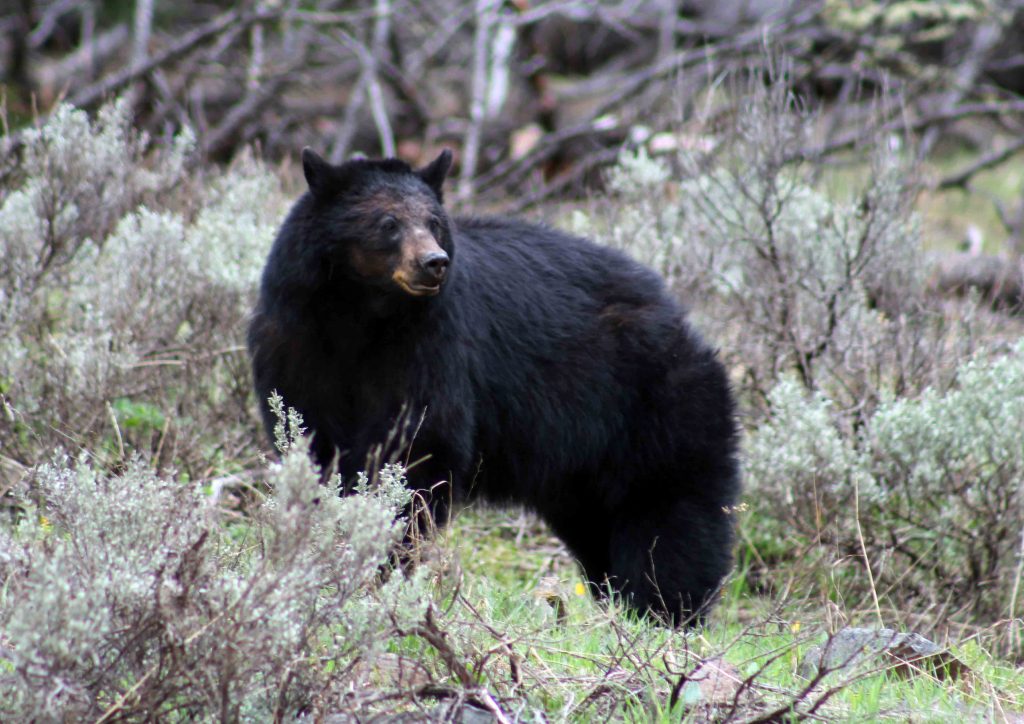
Flashback to the year 2000, The Department of the Environment and Sustainability at BGSU created its first two environmental field experience courses visiting the Florida Keys and Yellowstone. These courses focused on major challenges to the ecosystems while the students prepared to visit these locations at the semester’s end. Nineteen years later, seven trips to Yellowstone, three to Algonquin Park in Ontario, and three other locations visited, a return to the Greater Yellowstone Ecosystem was in order.
From May 19 – 21 the group enjoyed their field experience which would be full of animals, gorgeous views and lectures from knowledgeable experts in and around Yellowstone. After the welcomed sighting of the black bears in the Tower Falls area of Yellowstone National Park, the group drove through Lamar Valley, dubbed America’s Serengeti, where bison and elk were spotted as well as juvenile bighorn sheep. The group would continue to see majestic creatures throughout their week.
Lodging was located in different gateway communities across Montana and Wyoming including motels and cabins located in West Yellowstone, Gardner, and Cooke City all in Montana, and Jackson, Wyoming. Staying in all of these areas which varied from quaint cities to bustling areas opened the students’ eyes to living disconnected from Wi-Fi and creating relationships with the people and wildlife around them.
The week was full of activities including two longer hikes, one across Yellowstone’s Hayden Valley and the other around Jenny Lake in Grand Teton National Park.
Environmental Science major Madison Brown said, “The Grand Tetons were absolutely gorgeous. I had a great time hanging with friends during the hike, waking up in the mountains was one of the best feelings.”
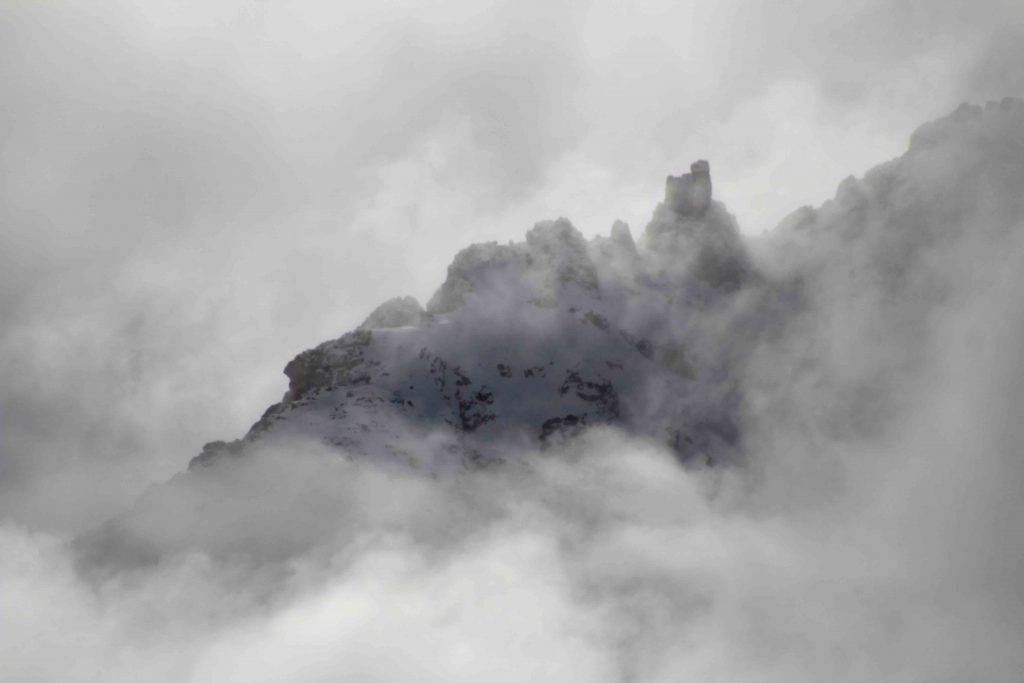
There were also stops at visitor centers and the National Museum of Wildlife Art. Many different geological features were observed including the Grand Tetons, the Grand Canyon of Yellowstone, Mammoth Hot Springs and Old Faithful Geyser. Each of these locations had their own charms and were full of wildlife and striking landscapes with rolling hills, beautiful water features and breathtaking views.
Emily Clark thoroughly enjoyed the gorgeous views of the park and wildlife. “The Grand Canyon of Yellowstone was so large and beautiful. The canyon was very deep and the rocks were eroded away into a magnificent landscape. We also got to see a black wolf which has been my dream!”
The trip had four successful and prolific individuals speak to our group while in the Yellowstone Ecosystem.
Brian Teets, BGSU Alumni and Toledo native, works in the parks as a resource management specialist. Brian was a student on an Algonquin Park field experience back in 2002. He shared how great of a positive impact the trip had on his life and led to his career success within Yellowstone National Park. He gave perspective on how hard it is to get your foot in the door in the National Park’s system. He provided helpful tips when applying and what kinds of questions are on the application. He emphasized the importance of volunteering when the students could and taking people up on opportunities when they’re offered. Teets highlighted his time spent in the park thus far and told us about the frightening time he came within a few feet of a grizzly bear while cross country skiing with his friend and had to spend about half an hour trying to slowly back away. (Always carry your bear spray.)
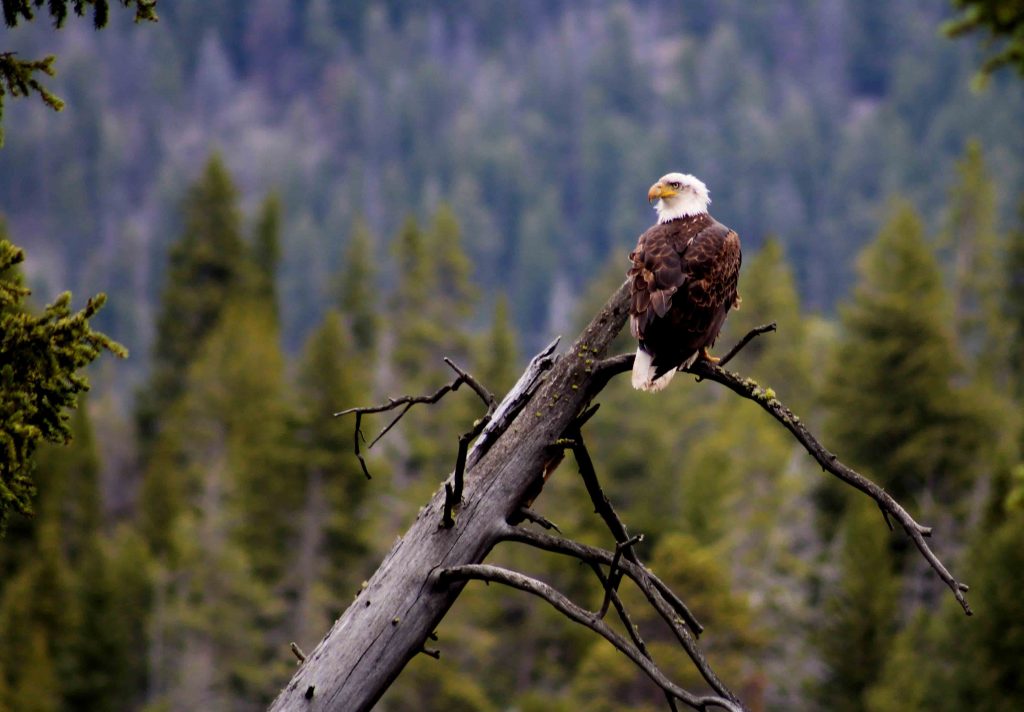
Yellowstone’s Deputy Superintendent or second in charge, Pat Kenney, spoke to the students about current challenges facing Yellowstone including maintenance backlogs, bison and grizzly management, and the management of invasive lake trout.
Evan Blados enjoyed Kenney’s talk and hearing about subjects discussed in class. “It was cool to see our group project unfold in front of us as I didn’t think he would mention a topic like visitor impact on the park.”
Amy Ringholz, BGSU alumna and Jackson Hole artist, was gracious enough to speak to the students and share her journey to success. She grew up in the Cleveland area and after graduating with an art major and teaching school for a few years, found a job in Wyoming at a dude ranch. She fell in love with Jackson Hole and decided to stay. She worked hard and bid her time while saving money and practicing when she could, selling paintings on the side to guests at the ranch. Finally, her hard work was recognized and she started to make a name for herself. Ringholz now has her own brand new studio outside of her house in a beautiful barn that she general contracted herself. She also has a new studio in downtown Jackson which she just moved into from a smaller one. Her paintings can be found in many buildings throughout the city as well as within residents’ homes and a few famous houses such as that of actress Katherine Heigel. Ringholz emphasized the importance of working hard for your dreams and doing whatever is necessary to get there. Quitting your crappy day job and dropping everything isn’t the answer, in fact she told everyone to do quite the opposite and her speech really resonated with the students.
“Amy’s kind of work ethic and confidence in her abilities is just so impressive and inspiring. Although we don’t have much in common in terms of career choices, her advice was really helpful,” reflected Kayleigh Obrock.
Zach “Colt” Eversole said, “You hear thousands of success stories from famous people but all those people you never interact with and they never lived in places or went to colleges similar to you. Seeing someone come from a similar place and reach that level of success was cool to see.”
A speaker that was particularly fascinating to listen to was Lizzie Cato, Yellowstone Wolf Project Biologist, who spoke about her work with the wolf packs located throughout the park. She wakes up early each morning to scout out wolves and see what’s going on with them. There are about 11 packs located throughout Yellowstone and each has been identified and labeled. Most of them are even GPS collared which is done by helicopter. The wolves are harder to spot than your typical bison as they’re smart and avoid people for the most part.
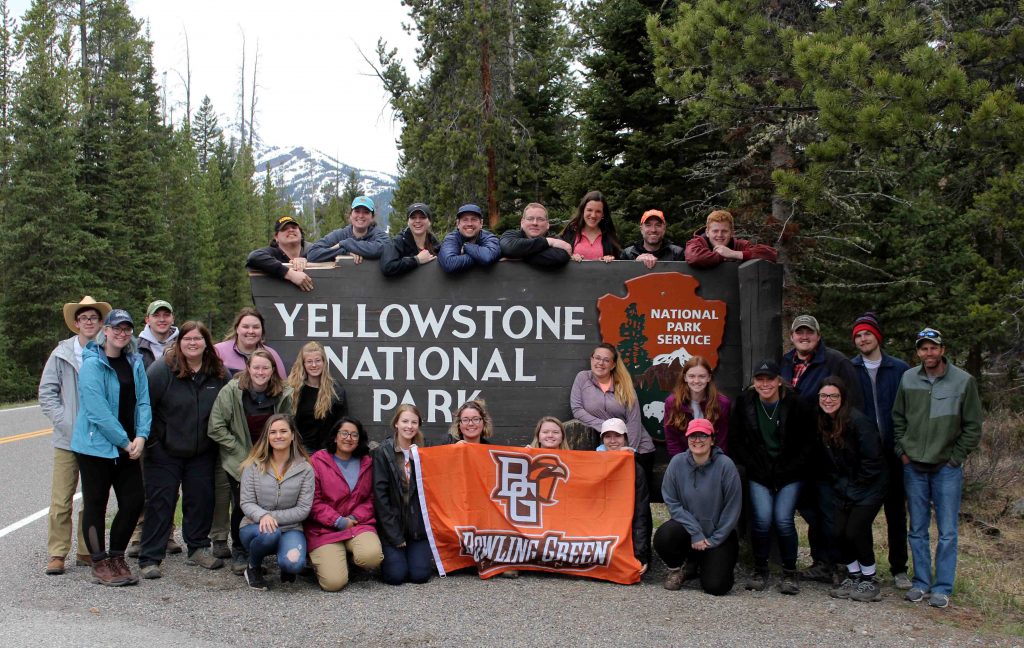
A large emphasis of the course was on future career success and learning from the instructors on the trip who all came from full-time environmental positions outside of BGSU. Each of the instructors provided insight into internships and career development. Four of five are BGSU graduates and hold seven BGSU degrees between them.
The instructors were Cody Marshall, Chief Community Strategy Officer at The Recycling Partnership a veteran field instructor of seven of these courses, Karon Wynne, Clinical Trial Liaison at PRA Health Science, Rick Kappel, Environmental Management Instructor at the Air Force Institute of Technology Civil Engineer School, field instructor on four of these courses, Craig Mavis, Planning and Development Team Leader at the City of Phoenix while also instructing on four field experiences and Craig Wittig, BGSU, Director of Community Programs at The Recycling Partnership and primary instructor of the course and an instructor on more than 10 total field experiences.
Nick Conrad appreciated the input from the instructors and lectures. “I have a drive to better my education and to take opportunities to further my career and to use the contacts I have met after this trip.”
The field experience was a trip to remember and all of the students thoroughly enjoyed their time out West. Sights were seen and bonds were made that far exceed what is generally achieved in the classroom.
Zach “Colt” Eversole summed up how much the trip meant to him. “I really can’t even measure how influential this trip was for me. I was able to see and learn a lot of cool new things and gain some new perspective towards life and my future.”
(Emily Wittig, a visual communications technology major at BGSU, served as social media coordinator and photographer for the Yellowstone capstone trip.)

